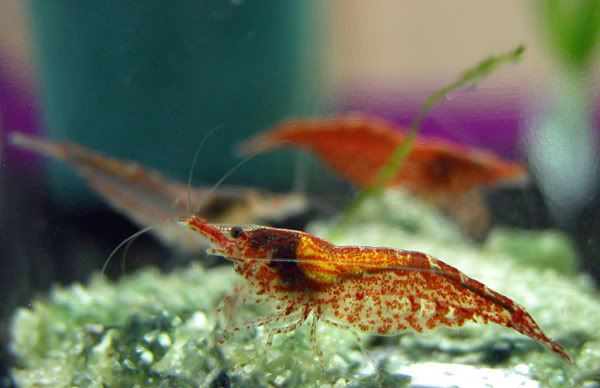Hi everyone, it's been about 4 or 5 months since originally posting this thread; hope you won't mind my updating their current situation.
I must say, RCS multiply fast! After the 5th batch of shrimplets (resulting in about 125 shrimplets total), I had to do something since I was starting to run out of room. I deliberated long and hard on different options and finally decided to slow them down by separating the offspring according to sex. So the only male and female together in a breeding tank is the super red and the original male (the pair that had been in the mating pic).
Got a pic of this RCS shrimplets minutes after it was born. The head still looks like an egg! Except now, with an unfurled tail:

Juvenile:
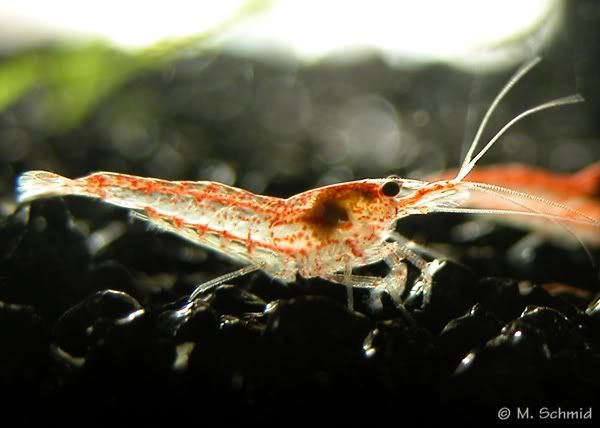
Scads of Juvies:
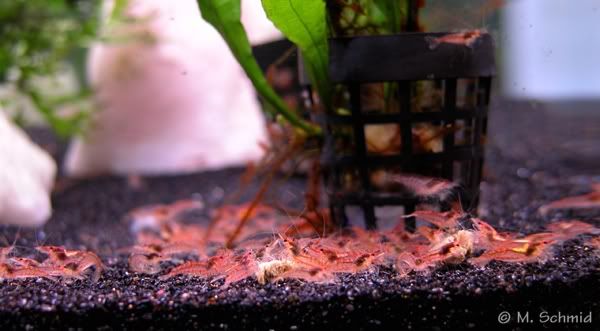
The original super red mom is still around:
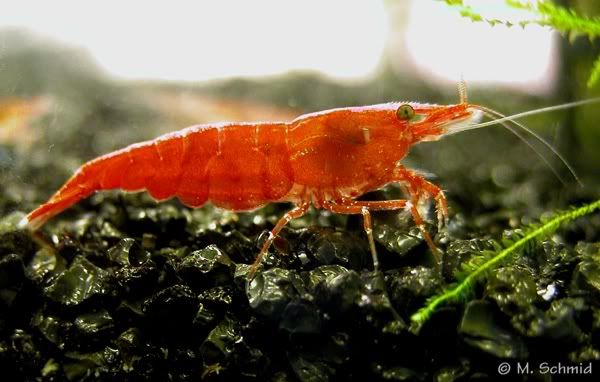
Snacking with Jr.:
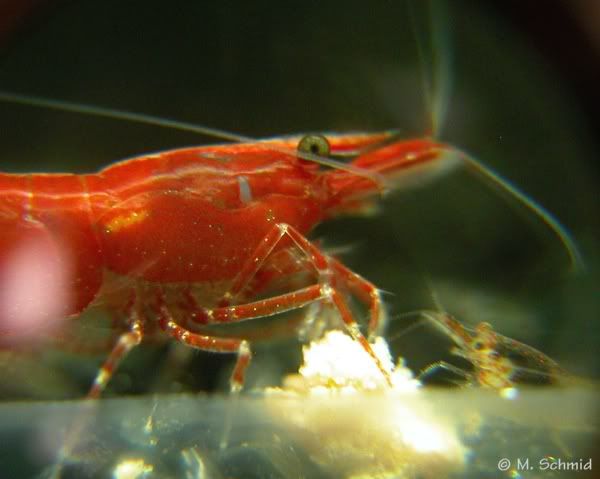
To explain what I have done in separating the shrimp by sex, I've turned my 20 gal into what I jokingly call my "All Female RC Shrimp Utopia."

I'm embarrassed to show my tanks since they are all "no maintenance" tanks and not very exciting to look at so please bear with me - but I really like looking in there and seeing the little red ladies. Bet a male RCS would like to accidentally get put in there, eh?

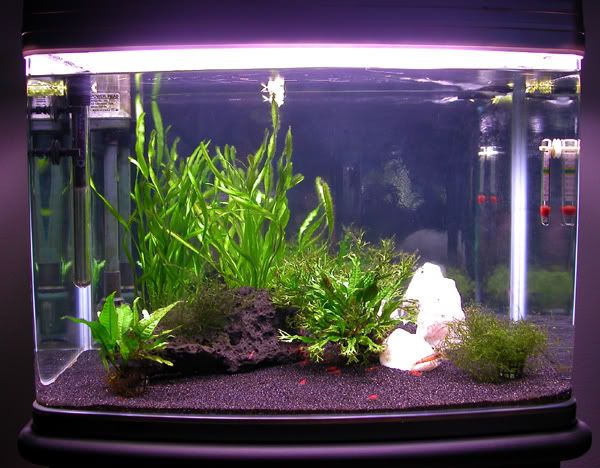
Feeding time:
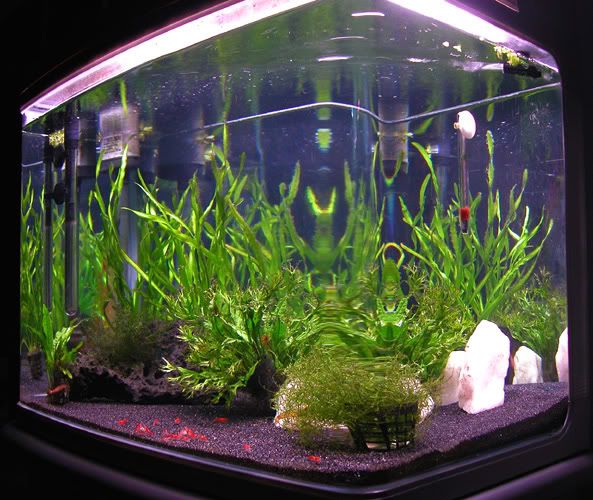
Front view:

Detail:
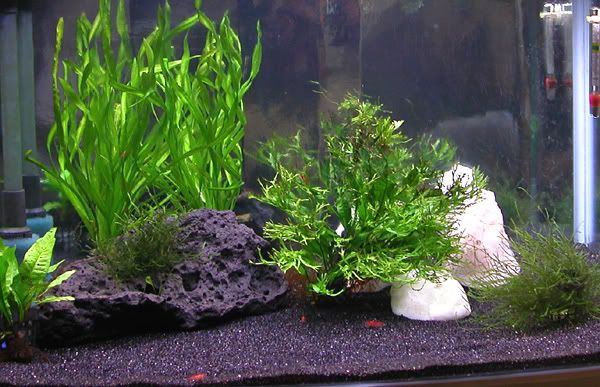
Detail:
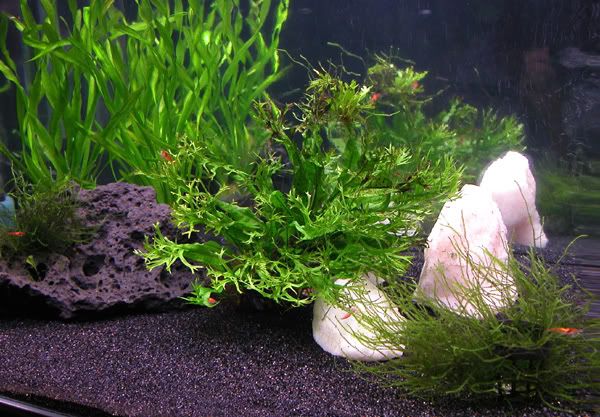
Here's one of the young females with unfertilized eggs; I wasn't at first entirely sure if RCS will carry eggs without fertilization (although I knew certain Macrobrachiums do) - now I know for sure they will, even if for a very short time. There was one that actually carried for 4 days and had me worried! I thought maybe a male was hiding in there with a disguise on (yellow paint, anyone?).
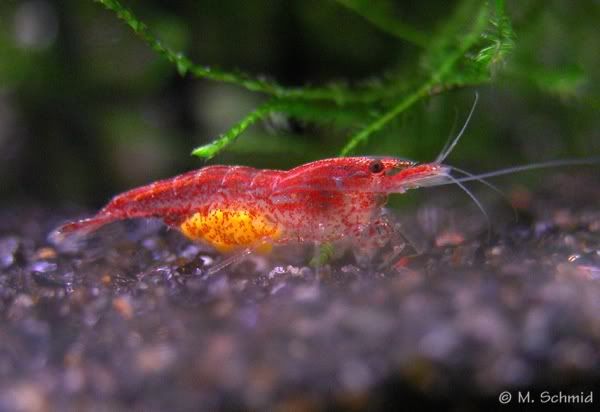
I haven't reached any conclusions yet concerning breeding for color; most of the growing females seem decently colored though 3 or 4 in particular stands out. I'm going to venture a guess as to say that out of a batch, you'll get the occasional really super red one, with the rest being reasonably well colored. Will have to wait until they are older.
Here are questions I've posed for myself, which may in time play out:
1.) After several cycles of having unfertilized eggs on their swimmerettes, will they stop, without the presence of males? And when they are put back in with a male after this process, will their ability to reproduce have been compromised?
2.) Since pregnancy seems to enhance the color of RCS, will the fact that most of these females won't ever get pregnant, affect reaching an optimal color?
3.) I've been trying to observe what causes color intensity or a lack thereof in RCS females. So far I have found substrate darkness plays a big role. I've also found RCS can vary in color intensity throughout the day. For mine, they seem to be the most colorful late at night when the tank lights have been on for a long time. Conversely, they seem most pale in the morning/early afternoons, when tank lights haven't been on - incidently, lights on from 2PM - 1AM. Not sure what they look like at the crack of dawn since I'm never awake then... I would guess less intense color?
4.) I notice their color is more intense during the time they have a larger saddle. After they've dropped the eggs and their saddle is at minimum, they are a little less intense. Also, RCS tend to be sexually mature long before they reach their full coloration.
If you've made other observations about RCS, please feel free to contribute!

-GB



